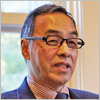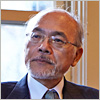The horse depicted in the statue is larger than a typical Japanese cavalry mount. In terms of their height, Japanese native horses are much shorter. If the horse were scaled down to the actual size of a Japanese horse, the effect might be reminiscent of Don Quixote riding the scrawny Rocinante. In fact, for samurai in armor, Japanese native horses were just the right size for them to mount easily and gallop around the field of battle. But for the sake of appearances, a larger horse is better, giving a much more stylish impression. Clearly, this was the opinion of Sadayuki Goto, the artist in charge of producing the horse. So he opted for the design of a horse based on the characteristics of Arabian horses, which were imported to Japan for military use from the Meiji period onward. As a sculptor, I can appreciate what he had in mind. Goto had served in the Japanese Army. He was familiar with military horses. He even obtained the carcasses of horses for dissection and analysis. For Kusunoki Masashige’s bronze horse, Goto brilliantly incorporated the characteristics of Arabian horses.

 EN
EN







